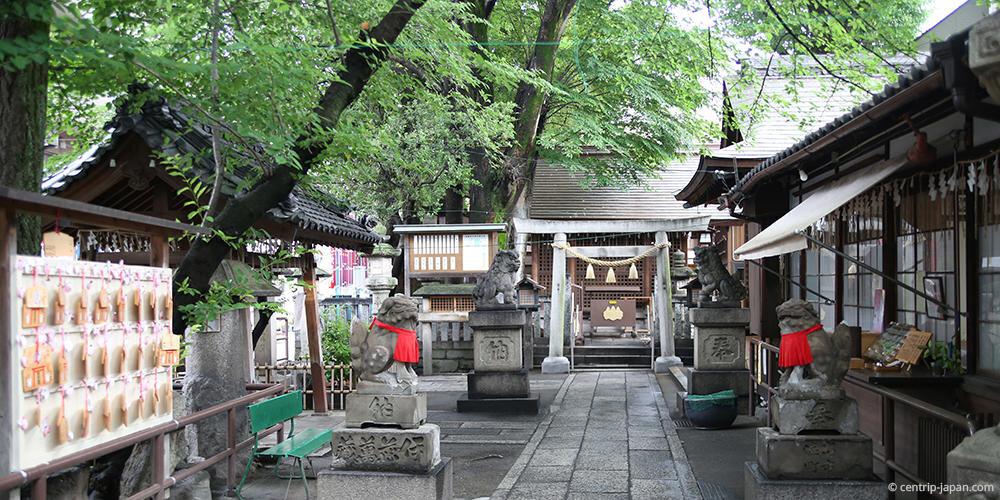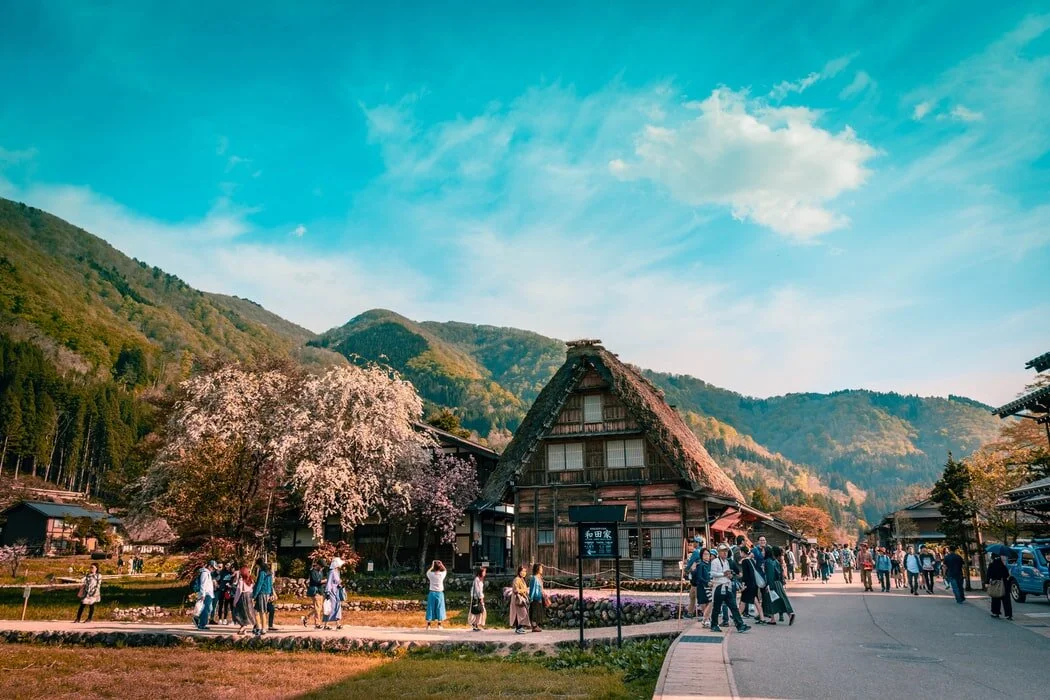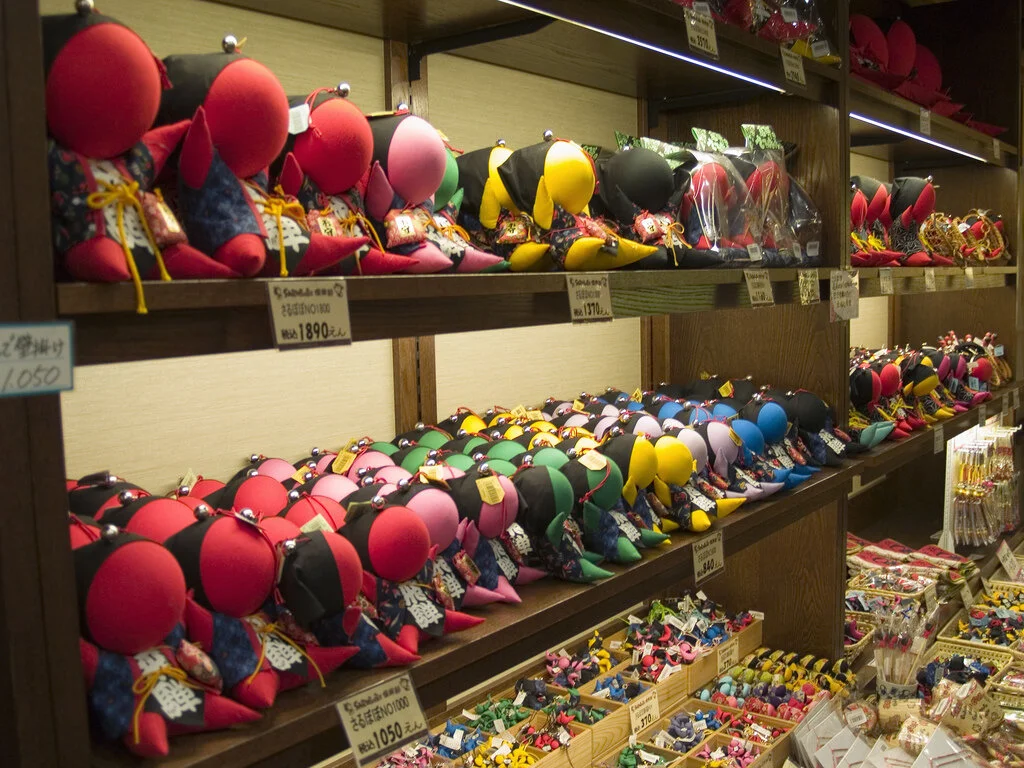Exploring Chubu: Nagoya, Shirakawa & Takayama
Last December before Covid-19 struck, I was lucky to have managed to catch a trip to Chubu in Japan. It has always been the next big destination on my travel bucket-list because I’ve heard from friends and travel enthusiasts that a trip there is bound not to disappoint!
Chubu is right in the middle of Japan’s main island and comprises nine prefectures, each with its distinctive climate, landscape and flavours. In this two-part series, come along with us as we explore our favourite areas in Chubu: Nagoya, Takayama, Shirakawa-go, Kanazawa and Fukui!
Nagoya
Home to the Nagoya Castle and the Atsuta Shrine, Nagoya is one of Japan’s lesser-known historic cities. I have been told that Nagoya is a must-go if I was in Chubu - and I definitely wasn’t disappointed!
Nagoya Castle & Honmaru Palace
Ivory-white capped with jade-green roofs, Nagoya Castle is a sight for the weary traveller. The golden Kinshachi ornaments that sit on the top of the main castle structure add to the grandeur.
Nagoya Castle
Photo Credits: coward_lion via Klook
Unfortunately the main castle complex is closed for renovations until 2022, but one can pop over to the Honmaru Palace just next door.
I loved how the walls were gold murals depicting a range of scenes - from plants to animals to common folk. Stepping into each corridor and reception hall, you are bound to be met with a dizzying array of gold masterpieces.
Looking back, I can’t find the words to describe what it felt like to be standing in a hall of that size and grandeur - you really have to see it for yourself!
Interior of Honmaru Palace
Picture Credits: japan-guide.com
Atsuta Shrine
With over 1900 years of history, the Atsuta Shrine is one of the most important Shinto shrines in Japan. Don’t be fooled by its inconspicuous architecture - it is the second largest shrine in Japan and the go-to site for devotees and locals during important festivals like New Year’s Day or Shichi-go-san.
Atsuta Shrine
Picture Credits: fun-japan.jp
Visitors can also leave behind an Ema (wooden wishing tablet) for good luck. As I visited near the end of the year, I neatly jotted down my wishes for the next year on the wooden tablet design I picked out.
Many devotees leave behind a wooden tablet with their wishes on them
Picture credits: japanvisitor.com
Osu Shopping Street
Shopping enthusiasts will be happy to know that the options are plenty in Nagoya! Visit Osu Shopping Street for boutique brands as well as vintage and avant-garde fashion. Perhaps even try out a new style (you can read our post on Japanese fashion trends here) and be pleasantly surprised!
At the northern end of Osu, there are plenty of shops specialising in used electronics, anime and manga. Osu Shopping Street is sometimes compared to Osaka’s Dotonbori and Tokyo’s Akihabara due to the immense variety of goods on sale!
Osu Shopping Street
Picture Credits: nagoya-info.jp
Foodies will be delighted to find shops selling traditional Japanese confectionery. Don’t forget to try out Hacho-miso - a regional specialty of Nagoya! It is made from 100% soybeans and is a reddish-brown, much darker in colour compared to the yellowish-tinted Miso pastes we typically see.
Hacho-Miso
Picture Credits: nagoyafoodie.com
Endoji Shotengai Shopping Street
Those that prefer a quieter shopping affair will be pleased with Endoji Shotengai Shopping Street. A historical shopping district with traditional townscapes, Endoji is the perfect location for cafe-hopping and discovering hole-in-the-wall eateries.
When I visited, a significant number of shops were closed, and the atmosphere was not as bustling and busy compared to other more famous shopping streets in Japan, such as Osaka’s Nipponbashi, but there is no doubt that the quaint atmosphere does add to its elusive charm.
Endoji Shotengai Shopping Street
Picture credit: http://tourismdesigners.com/endoujitours/
Shikemichi
A stone’s throw away from Endoji is Shikemichi. At first glance, Shikemichi appears to be a town stuck in time. The historical houses and buildings, damaged from war and blackened over time, are perfectly preserved. Keep your eye out for the smattering of cafes and restaurants and be transported back in time and be sure to visit the Sengen Shrine in the area while you’re at it!
Sengen Shrine in Shikemichi
Picture credits: centrip-japan.com
I personally recommend staying in Nagoya for two days. Visit the historical sights on the first day, before ending off your trip on the second day by hitting the shopping locations and older districts and soak in the atmosphere!
Shirakawa
Shirakawa is a UNESCO world heritage site and one of the most-visited places in Japan. Located in the Japanese Alpine Region, it experiences large amounts of heavy snow in the winter and transforms into a winter wonderland.
The highlight of the village is the Gassho-zukuri houses. The roofs of these houses are thatched by villages and look like hands in prayer. The steep angle of the roofs allow the snow to slide off easily in the winter.
Gassho-zukuri houses typical of Shirakawa-go
Picture credit: Sorrawis Chongcharoen via Unsplash
Ogimachi is the largest and principal village in Shirakawa-go. You can visit a dizzying array of different houses, each with its unique backstory and peculiarities. The Wada house is perhaps the largest and the most well-known. Most of the houses are built for living on the lower floors and rearing silkworms for various agricultural purposes on the upper floors.
The Shiroyama observatory in Shirakawa gives a jaw-dropping view of the village. In the winter, the view resembles that of what you’d imagine Santa Claus’ village to be - humble little huts scattered across a vast expanse of fluffy white snow. On Sundays in January and February the annual light-up festival gives the entire village an ethereal and whimsical glow.
Shirakawa-go illumination in winter
Picture credit: thegate12.com
I visited in early January, hoping to catch the raved-about view, but it was still too early and there was no heavy snowfall yet, despite it being well below 0 degrees celcius! In addition, it was drizzling and snowing simultaneously, making the village slushy and muddy. Nevertheless, the view of the village from up above did not disappoint.
My personal tip? Check the weather forecast before you visit - timing is very important! And having a stroke of good luck would definitely help!
Shirakawago without the snow!
For those with a little more time to spare, check out the Shirakawago-no-yu, the only natural Onsen in Shirakawa Go. The Onsen is located within a resort, but you do not have to be staying overnight to use it! At only ¥700 (approximately SGD9.20), the resort allows guests to use the onsen in the day. A warm onsen in the depth of winter? Sign me up!
Shirakawa is definitely one location not to be missed. A tour bus is definitely recommended if you intend to explore it in-depth, as many villages and locations are not accessible on foot! My friends and I missed the bus back from the observatory as we were too busy snapping pictures and lost track of time. We ended up having to hitch a ride from a friendly Japanese young man. An unexpected but definitely pleasant end to our day in Shirakawa!
Takayama
Tucked in the mountainous Gifu prefecture, Takayama is best known for its old town and snowy scenes in winter.
Sanmachi Suji District
When you find yourself in Takayama, you must visit the Sanmachi Suji District, which boasts the most picturesque lattice wooden buildings that will take you back in time. Rows of shops sell a range of handicrafts that are perfect to buy as souvenirs for loved ones - such as pottery, lacquerware and chopsticks. One can even get custom-made chopsticks!
When I visited, it was snowing heavily. With the beautiful wooden buildings and the fluffy snow settling on the ground, the district looked like something straight out of a storybook!
Streets of Sanmachi Suji
Picture credit: japan-guide.com
Miyagawa & Jinya-mae Morning Markets
If you’re spending the night in Takayama, be sure to wake up early the next morning and visit Miyagawa and Jinya-mae Morning Markets. These morning markets are one of the biggest in Japan and sell a diverse range of goods from fresh produce to spices, sweets and handicraft.
The morning crowd at Miyagawa Morning Market
Hida Folk Village
Hida Folk Village is a great alternative to Shirakawa-go as it is quieter and with less tourists, but offers sights as breathtaking as those in Shirakawa-go. It is an open air museum with about 30 traditional gassho-style houses.
Before leaving Takayama, remember to pick up a Sarubobo doll from one of many shops in the old town selling it. These dolls are traditionally made by grandparents for their grandchildren - particularly for their granddaughters as a good luck charm in marriage. They are the perfect souvenir to remember your adventure in this quaint little town.
Sarubobo Dolls
Picture Credits: Wikimedia Commons
This wraps up the first part of our series. Can’t wait to discover more? Keep your eye out for our next post as we introduce to you the beautiful Kanazawa and Fukui.
Have you heard about our Japan Virtual Travel Contest already? We know it’s difficult to travel in this period, so send us some of your fondest memories of Japan and stand to win attractive prizes. Click on our Instagram post for more details and click on our Instagram story highlights if you have queries!






















